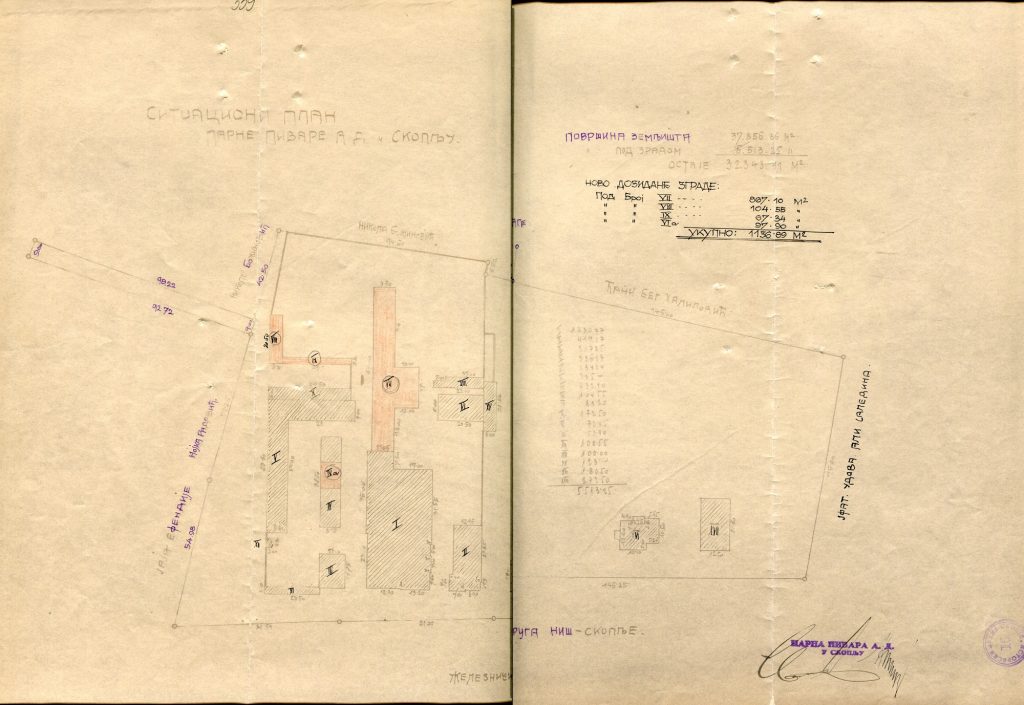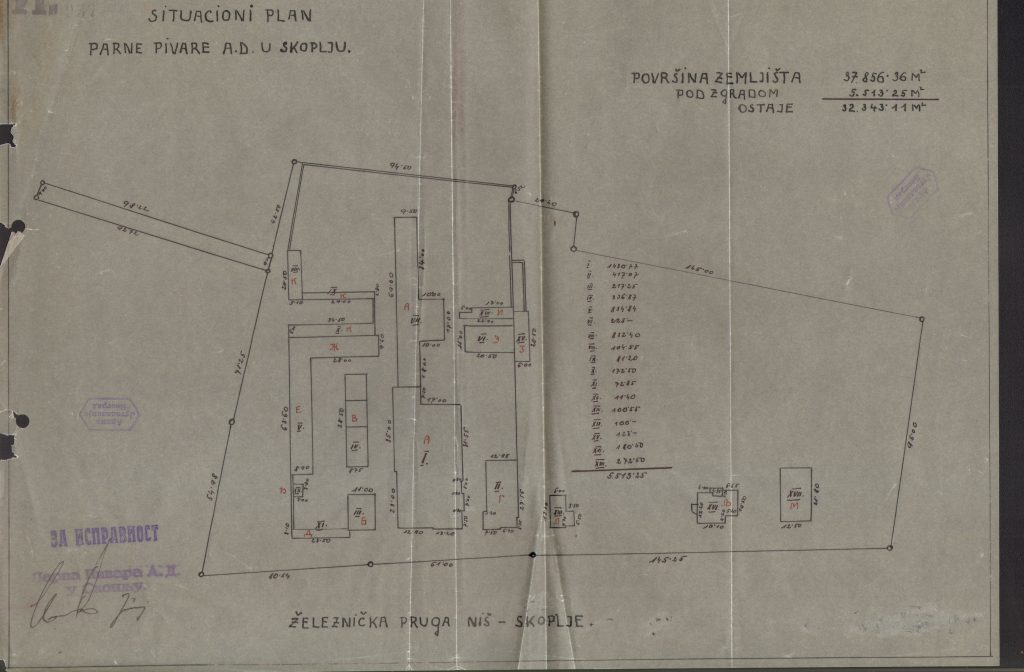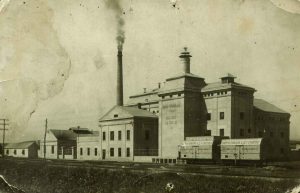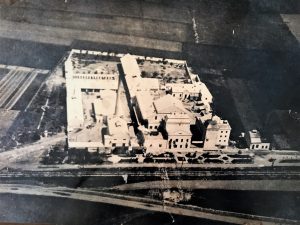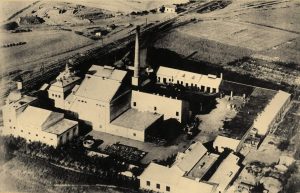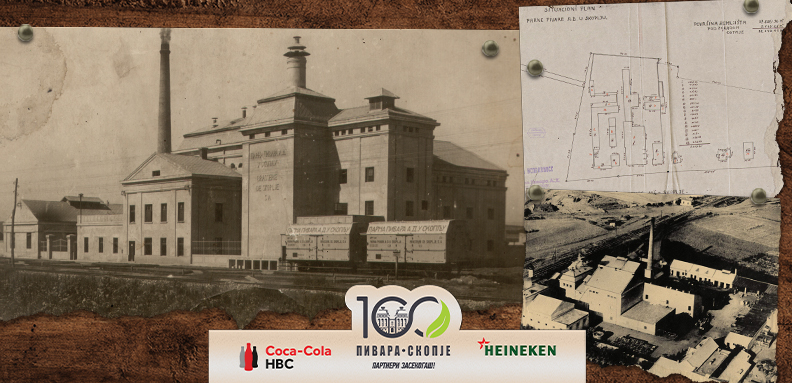
THE FIRST STEPS OF PIVARA SKOPJE THROUGH THE PRISM OF HISTORICAL DOCUMENTS
Poured by:
Vasilka Dimitrovska, M.Sc
Alexander Madzovski
HAEMUS – Center for scientific research and promotion of culture
The first official steps of the existence of Parna Pivara AD – Skopje as a company are recorded in history through the documents testifying to the foundation on September 2nd, 1922, as well as the first initiative meeting of the shareholders that took place a few days later, on September 10th. Then followed the legal preparations for the construction of the factory itself, which can be concluded from the approval issued by the Ministry of Trade and Industry of the Kingdom of SHS on December 16th, 1922. The document is a response to a request by the young joint-stock company for legal approval for the construction of a steam brewery on the premises of the previously purchased property in Keramidnica, which was then located outside the city area of Skopje. The exact beginning of the construction activities has not been determined with certainty, but a document testifies that the construction officially began in 1922. It is a request for correction of official administrative documentation from 1925. Namely, in February 1925 the management of Parna Pivara AD requested a certificate from the Municipal Court of the City of Skopje for the number and type of buildings in the vicinity of the then already built factory. This certificate was required for tax exemption within the framework of the then tax incentives. But the officials in the court made a mistake regarding the dating, to which Parna Pivara – Skopje reacted with a request for correction. According to the statement in this application, the first foundations were laid in 1922, and the construction was completed in August 1924, when the production of the first SKOPSKO began.
Being in the immediate vicinity of the Skopje-Nis railway, the Skopje Brewery was probably a kind of attraction for the passengers in the train itself, while passing by it. We can see what the factory looked like in those first beginnings from a certificate for the actual state of the facilities, issued on February 27, 1925. From this certificate, we learn that Parna Pivara AD had the following facilities in the vicinity of the factory:
- Heating station
- Coal shed
- Watchtower
- Residential premises for personnel from the financial sector
- Warehouse
- Bottling plant
- Resin factory
- Barrel shed
- Living quarters for workers with a separate room for food storage
- Poultry
- Canteen
- Two-story malt factory
- Dryer; a three-story building with an attic and a ground floor
- Building for washing the barrels
- The main brewery building (administrative building), which was a three-story building with basement rooms and an attic
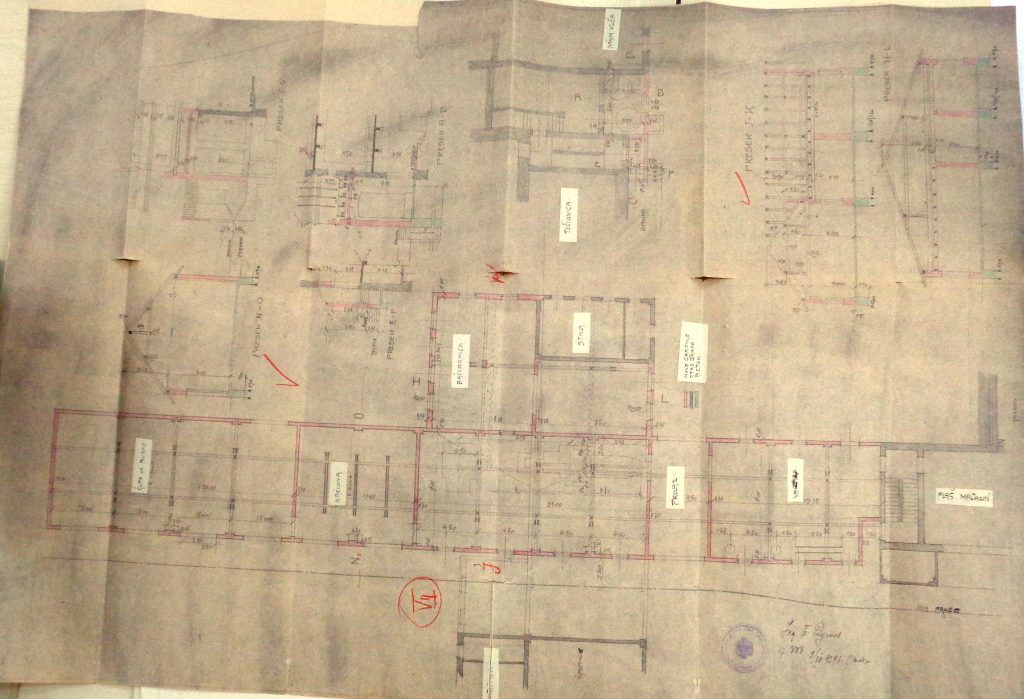
Fig. 2, Situational plan of Parna Pivara AD – Skopje showing the layout of the facilities and the proximity of the Nis-Skopje railway line
Another document from 1933 illustrates the first beginnings of Pivara Skopje in a particularly interesting way. It is a certificate issued by the Municipal Court of Skopje, which refers to the prices for transportation by carriage. According to this document, not only were the prices for carriage services regulated, but also exact carriage lines were determined. The starting point was the railway station, which was then located on the site of today’s “Mala Stanica”. From there, lines went to Čair, Treska, Debar Maalo, Tasino Česmice and Sveta Petka, which gives a clear idea of how far the city traffic went in that period. It is interesting that there was a special train line from the railway station to the Skopje brewery in Keramidnica. Transportation for one person cost 25 dinars, for two people 30, and for three or four people it was 50 dinars. If the delay was no longer than 10 minutes, half of the same price was charged for return. If the hold was longer, then the price was calculated by an hour of waiting. If we take into account that the nearby Krnjevo neighborhood was known for its numerous bars at that time, and on both banks of the river Vardar had city beaches, it can be considered that this carriage destination was particularly popular.
Fig. 3 Aerial photos of the facilities of Parna Pivara – Skopje
The text is adapted and reworked from the original scientific research project of HAEMUS entitled “Study on the history of Parnata Pivara Skopje”, commissioned and supported by Pivara Skopje.
Photo: Archives of Pivara Skopje, private collectors
Archival sources: NUB “St. Kliment Ohridski” – Skopje, DARMS – department Skopje (Archive of the City of Skopje), Archive of the Skopje Brewery







